Cette page a été traduite automatiquement et pourrait contenir des erreurs
DHIS 2.24 Vue d’ensemble
Découvrez la version 2.24 de DHIS2, qui comprend de nombreuses nouvelles fonctionnalités, applications, améliorations et corrections de bugs. Sur cette page, vous pouvez trouver des informations sur cette version du logiciel, y compris des descriptions de fonctionnalités, des liens vers la documentation technique et plus encore.
Aller à une section sur cette page
Fonctionnalités d'analyse
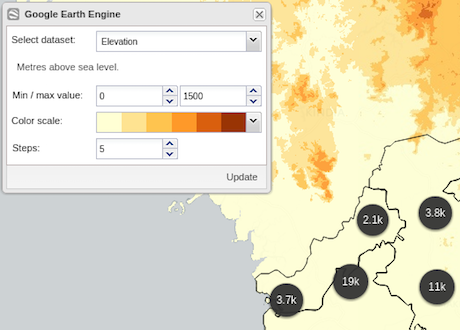
Couches SIG pour l'altitude, la densité de population et les lumières nocturnes
DHIS 2 prend désormais en charge les couches cartographiques de Google Earth Engine, qui comprend plus de trente ans d’imagerie historique et d’ensembles de données scientifiques, mis à jour et enrichis quotidiennement. Jusqu’à présent, nous prenons en charge trois ensembles de données, mais d’autres couches seront ajoutées dans les mois à venir. Vous trouverez les couches de Earth Engine dans le menu supérieur, à côté des couches limites. La couche d’élévation peut être utilisée pour visualiser le risque de maladies transmises par les moustiques. Sélectionnez une échelle de couleurs, une élévation minimale et maximale, et le nombre d’échelons pour diviser votre plage. Les mêmes options sont disponibles pour les couches « population » et « éclairage nocturne », un autre indicateur du lieu de résidence.
[ Capture d’écran 1 | 2 | 3 | 4 ] [ Démo 1 | 2 | 3 ][Documentation]
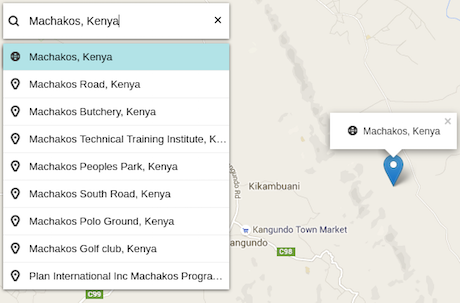
Recherche de lieux dans le SIG
Vous pouvez désormais rechercher des lieux et des régions sur l’appli SIG. Cliquez sur l’icône de la loupe et tapez le nom du lieu. Vous obtiendrez des suggestions au fur et à mesure que vous tapez. Sélectionnez un lieu dans la liste pour le voir apparaître sur la carte. Cliquez sur le bouton x dans le champ de recherche pour supprimer le marquage.
[ Capture d’écran ] [ Démo ][Documentation]
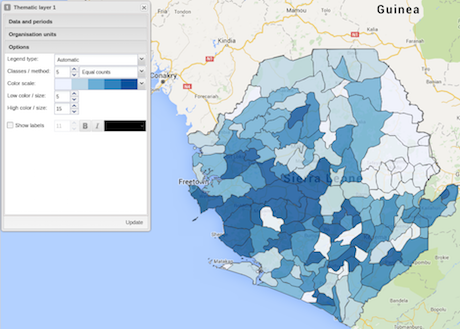
Échelles de couleurs pour les couches thématiques du SIG
Choisissez parmi les belles échelles de couleurs de ColorBrewer lorsque vous visualisez des couches thématiques. Ces échelles permettent de créer des cartes plus précises et plus conviviales, car les distances entre les couleurs sont proportionnelles à leur différence perçue.
[ Capture d’écran ]
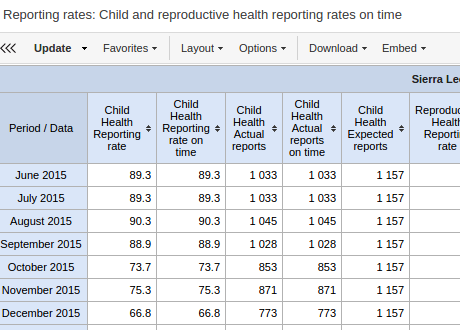
Déclaration des taux dans les délais
Le tableau croisé dynamique vous permet de visualiser les taux de signalement basés sur les soumissions de formulaires dans les délais impartis. Une soumission dans les délais doit avoir lieu dans un certain nombre de jours après la période de déclaration. Ce nombre est configurable par ensemble de données. Dans le tableau croisé dynamique ou l’application de données, sélectionnez Données > Ensembles de données > Taux de déclaration à l’heure ou Rapports réels à l’heure, puis sélectionnez votre ensemble de données.
[ Capture d’écran ] [ Démo ] [ Documentation ]
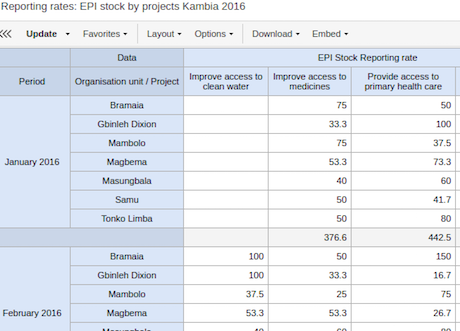
Taux de rapport sur le formulaire par catégories d'ensembles de données
Analytics prend désormais en charge les rapports sur les taux ventilés par catégories d’ensembles de données. Par exemple, si votre ensemble de données collecte des données pour plusieurs projets modélisés en tant que catégories d’ensembles de données, vous pouvez afficher le taux de déclaration pour des projets individuels. Essayez-le sur la démo en sélectionnant l’ensemble de données EPI Stock et la catégorie Projet.
[ Capture d’écran ] [ Démo ]
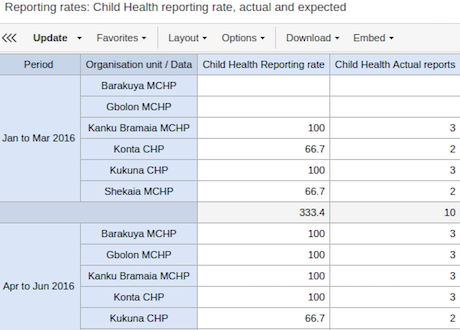
Rapports attendus basés sur les dates d'ouverture et de fermeture de l'unité organisationnelle
Pour les taux de déclaration dans les analyses, le nombre de déclarations attendues est désormais calculé en fonction du fait que les unités d’organisation affectées à l’ensemble de données étaient ouvertes ou non pour la période d’agrégation. Par exemple, si vous demandez les taux de déclaration d’un district pour le mois de juin et que l’un des établissements du district n’a ouvert ses portes qu’en août, cet établissement ne sera pas pris en compte dans le nombre de déclarations attendues.
[ Capture d’écran ]
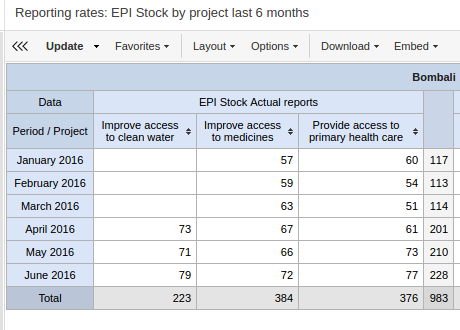
Rapports attendus basés sur les dates de début et de fin des options de catégorie
Pour les taux de déclaration qui impliquent des catégories d’ensembles de données, le nombre de déclarations attendues est désormais calculé sur la base des dates de début et de fin des options de catégorie pertinentes. En d’autres termes, les enregistrements complets pour les options de catégorie ne sont inclus que si la période d’agrégation est comprise entre leurs dates de début et de fin.
[ Capture d’écran ] [ Démo ]

Titre du filtre du tableau croisé dynamique
L’application tableau croisé dynamique affiche désormais les éléments actuellement sélectionnés comme filtres sous forme de titre en haut du tableau.
[ Capture d’écran ] [ Démo ]
Caractéristiques générales
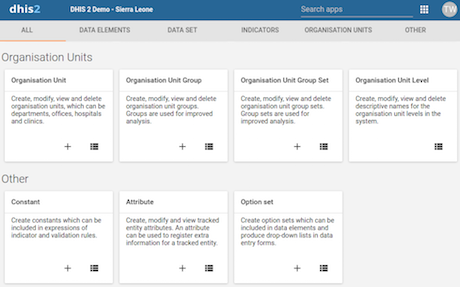
Amélioration de l'application de maintenance
Les ensembles de données, les attributs de métadonnées, les constantes et les ensembles d’options sont désormais pris en charge dans l’application Maintenance.
[ Capture d’écran ] [ Démo ] [ Documentation ]
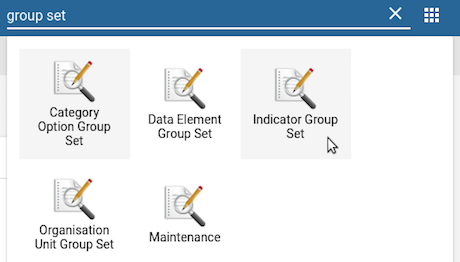
Recherche d'applications et d'objets à partir du menu
Vous pouvez désormais naviguer directement vers un type d’objet à partir du menu App. Par exemple, recherchez « ensemble groupes » dans le menu supérieur, et naviguez directement vers la liste des ensembles groupes d’unités d’organisation ou des ensembles groupes d’indicateurs, sans naviguer d’abord vers l’appli de gestion.
[ Capture d’écran ]
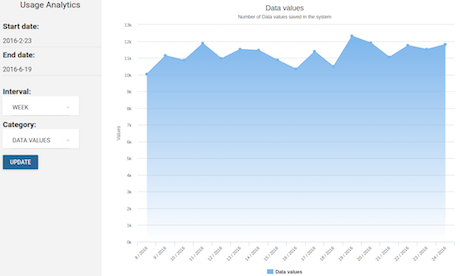
Amélioration des statistiques d'utilisation des données
L’application Analyse de l’utilisation fournit désormais des Rapports pour les favoris les plus consultés par type (ou exemple tableau croisé dynamique et graphique) et le nombre de valeurs de données stockées par jour.
[ Capture d’écran 1 | 2 ] [ Démo ] [ Documentation ]

Système de tickets
Vous pouvez désormais définir la priorité et le statut des messages de retour d’information. Cela vous permet d’utiliser la messagerie du DHIS 2 comme un système de tickets de base utile pour gérer l’assistance aux utilisateurs. Chaque message peut être traité comme un ticket et passer par un flux de travail (similaire à Zendesk, par exemple). Vous pouvez également envoyer des messages internes, visibles uniquement par les autres administrateurs de tickets. Pour cela, il faut être membre du groupe d’utilisateurs « Destinataires du retour d’information ».

Synchronisation des métadonnées
La synchronisation des métadonnées permet aux instances DHIS 2 de synchroniser les métadonnées entre elles. Avec une instance centrale et plusieurs instances distantes, les métadonnées créées au niveau central peuvent être synchronisées avec les instances distantes. Les instances distantes vérifieront auprès de l’instance centrale si de nouvelles collections de métadonnées/versions sont disponibles. Cela permet à l’auteur de la mise en œuvre de déployer les mises à jour des métadonnées de manière contrôlée et échelonnée.
[ Capture d’écran ] [ Documentation 1 | 2 ]
Caractéristiques du Tracker
Widget de saisie des données tabulaires
La saisie Tracker dispose d’un nouveau widget de saisie des données qui permet de saisir des données sous forme de tableau. Il affiche la liste des étapes du programme sous forme d’étiquettes à gauche. Les événements sont répertoriés dans un tableau qui permet de répéter l’étape du programme et d’éditer en ligne les valeurs des données d’événements. Le widget peut être activé à partir du tableau de bord du Tracker en allant sur l’icône d’engrenage > Afficher/masquer les icônes et en sélectionnant « Saisie des données tabulaires ».
[ Capture d’écran ] [ Démo ] [ Documentation ]
Ouvrir le tableau de bord du Tracker à partir de l'URL
Les tableaux de bord de Tracker peuvent désormais être ouverts directement à partir d’URL. Ceci est utile, par exemple, pour l’intégration avec d’autres applications de Tracker. Les règles de sécurité sont toujours appliquées.
[ Démonstration ] [ Documentation ]
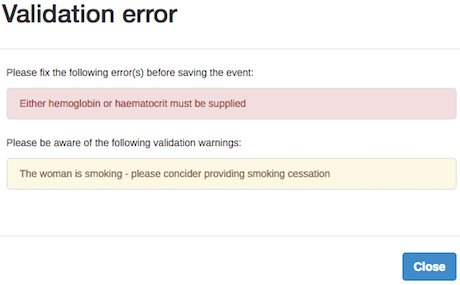
Amélioration des règles du programme
Il existe deux nouveaux types d’actions pour les règles du programme. Elles permettent de consolider les erreurs et les avertissements lorsque les événements sont terminés (dans la capture du Tracker) et sauvegardés/mises à jour (dans la capture de l’événement). Cela est utile lorsque le formulaire contient une combinaison d’éléments qui devraient déclencher une erreur/un avertissement, alors que chaque élément de données peut être légal en soi. Les champs obligatoires conditionnels en sont un exemple. Consultez le programme de visites prénatales sur la démo.
[ Capture d’écran 1 | 2 ] [ Démo ] [ Documentation ]
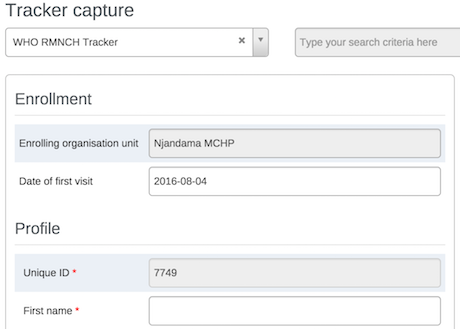
Identifiants générés par le système
Pour les attributs uniques des entités suivies, vous pouvez désormais demander au système de générer et d’attribuer automatiquement des identifiants numériques. Lors de l’enregistrement d’instances d’entités trackées sur le web, le formulaire d’enregistrement de la capture du tracker sera automatiquement complété par un numéro dans le modèle donné. Dans Tracker on Android, la génération d’identifiants permet de réserver une série d’identifiants pour chaque appareil Android. Cela permet d’enregistrer hors ligne les instances d’entités suivies sans risquer de dupliquer les identifiants lors de la synchronisation avec le serveur. Jetez un coup d’œil au programme RMNCH Tracker de l’OMS sur la démo.
[ Démonstration ] [ Documentation ]
Caractéristiques de l'API WEB
Amélioration de la solution de traduction
La solution de traduction des bases de données a été entièrement réécrite et fonctionne désormais en « traversant le graphe d’objets ». Cela signifie que vous pouvez naviguer, par exemple, dans des documents JSON, d’un élément de données à un groupe, tout en obtenant la traduction d’un nom d’affichage. Cette mesure permettra également de résoudre une série de problèmes liés à l’apparition de contenus non traduits dans l’interface utilisateur des applications.
[ Documentation ]
Prédicteurs de données
Une nouvelle solution pour générer des valeurs prédites a été introduite dans l’API Web. Cette composante sera utile pour générer des seuils pour la surveillance des maladies, la croissance de la population, etc. Nous fournirons une interface utilisateur pour cela et plus d’informations dans la version 2.25.
[ Documentation ]
Messages du programme
L’API Web propose désormais un nouveau concept pour les messages de programme, qui vous permet d’envoyer des messages à des instances d’entités suivies, des courriels et des SMS. Cela peut être utile, par exemple, pour envoyer des rappels concernant les visites à venir et des notifications concernant les programmes de sensibilisation.
[ Docs ]
Information sur la version
Cliquez sur les liens du tableau ci-dessous pour plus d’informations sur cette version du logiciel.
| To find more details about... | Follow this link: |
|---|---|
| Download release and sample database | Downloads |
| Documentation | Documentation |
| Upgrade notes | Upgrade |
| DHIS2 community | DHIS2 Community of Practice |